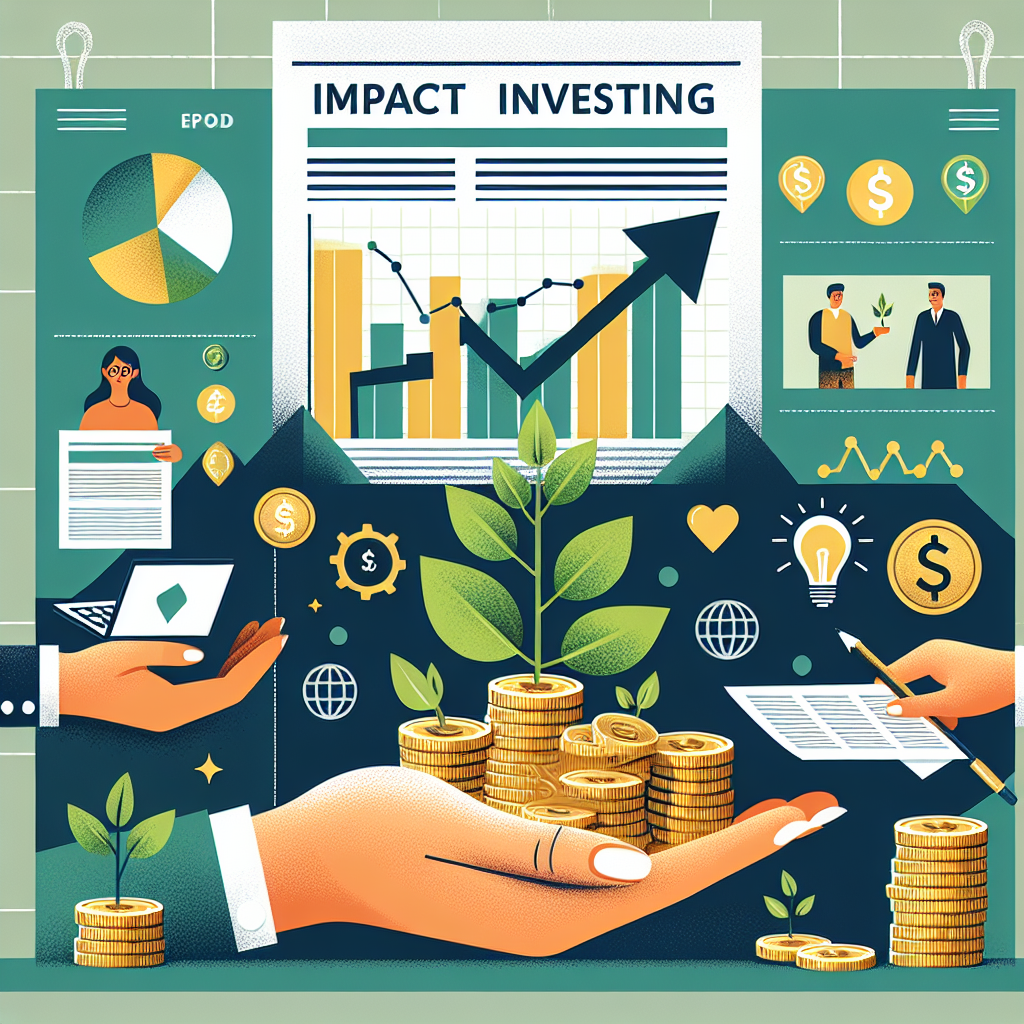
# Impact Investing: Shaping a Sustainable Future through Financial Choices
Impact investing continues to reshape the landscape of the finance industry by integrating social and environmental considerations into investment decisions. This approach not only seeks financial returns but also aims to generate positive, measurable social and environmental impact. As this sector grows, numerous developments reflect its increasing significance in addressing global challenges. This article delves into the latest news in impact investing, offering insights into trends, challenges, and success stories within this evolving field.
Emerging Trends in Impact Investing
The impact investing market is witnessing significant growth, driven by an increasing awareness among investors of the need to support sustainable initiatives. This growth is characterized by several key trends:
Expansion into New Sectors
Traditionally focused on sectors like renewable energy and sustainable agriculture, impact investing is expanding into new areas such as healthcare, education, and fintech. Investments in these sectors aim to solve pressing global issues while offering financial returns, illustrating the diverse potential of impact projects.
Greater Emphasis on Measuring Impact
There is a growing demand for precise, transparent impact measurement and reporting among investors. This demand has led to the development of new frameworks and tools that enable investors to measure the social and environmental outcomes of their investments accurately, fostering greater accountability and effectiveness in impact investing.
Increased Involvement from Institutional Investors
While initially led by private investors and family offices, impact investing is now attracting significant attention from institutional investors. Pension funds, insurance companies, and university endowments are increasingly allocating funds to impact investments, signaling a shift towards mainstream acceptance.
Innovative Approaches in Impact Investing
The sector’s evolution is marked by innovative strategies and financial instruments that further enhance its capacity to address global challenges:
Blended Finance
Blended finance combines capital from public and philanthropic sources with private investment, aiming to mitigate risks and leverage additional funds for high-impact projects. This approach has been instrumental in attracting private capital to sectors considered too risky or unproven by traditional investors.
Green Bonds
Green bonds are becoming a popular tool for raising funds for environmental projects. Issued by corporations, financial institutions, and governments, these bonds finance projects related to renewable energy, energy efficiency, and other climate-related initiatives, offering investors the opportunity to contribute to the green economy.
Challenges and Solutions
Despite its growth, impact investing faces several challenges that need to be addressed to unlock its full potential:
Standardization of Metrics
The lack of standardized metrics for measuring impact remains a significant hurdle. Efforts are underway to develop universal frameworks and benchmarks that can facilitate comparability and transparency across investments, helping investors make informed decisions.
Market Liquidity and Exit Opportunities
Providing adequate liquidity and exit opportunities for impact investments is crucial for attracting more capital to the sector. Innovative financial structures and secondary markets for impact investments are being developed to address these concerns, enhancing the attractiveness of impact investing.
Case Studies of Success
Despite the challenges, several impact investing initiatives have achieved remarkable success:
Renewable Energy Projects in Developing Countries
Impact investments have played a crucial role in financing renewable energy projects in regions with limited access to electricity. These projects not only deliver environmental benefits but also drive economic growth and improve living standards.
Affordable Housing Initiatives
Impact investors have significantly contributed to the development of affordable housing projects across the globe. These initiatives not only provide shelter but also foster community development and social cohesion, illustrating the transformative power of impact investing.
Conclusion
Impact investing represents a powerful tool for addressing the world’s most pressing challenges while providing financial returns. As this sector continues to evolve, staying informed about its latest developments is crucial for investors seeking to make a difference through their investment choices. With ongoing innovations and a growing commitment from investors at all levels, impact investing is poised to play an even more significant role in shaping a sustainable future.






